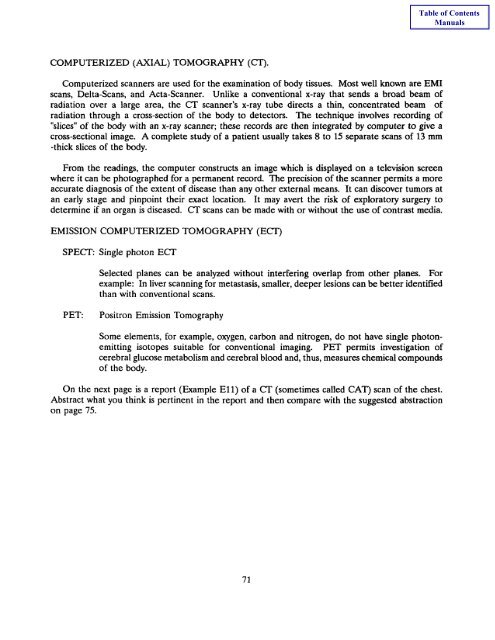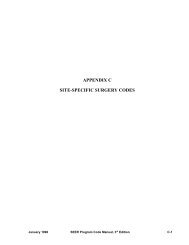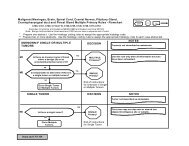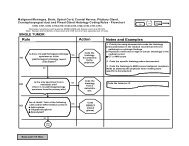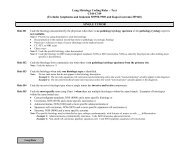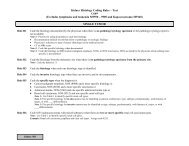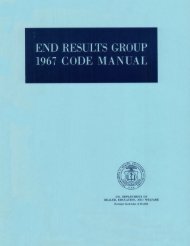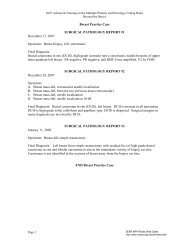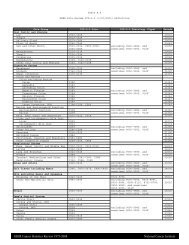Self Instructional Manual for Cancer Registrars - SEER - National ...
Self Instructional Manual for Cancer Registrars - SEER - National ...
Self Instructional Manual for Cancer Registrars - SEER - National ...
Create successful ePaper yourself
Turn your PDF publications into a flip-book with our unique Google optimized e-Paper software.
COMPUTERIZED (AXIAL) TOMOGRAPHY (CT).<br />
Computerized scanners are used <strong>for</strong> the examination of body tissues. Most well known are EMI<br />
scans, Delta-Scans, and Acta-Scanner. Unlike a conventional x-ray that sends a broad beam of<br />
radiation over a large area, the CT scanner's x-ray tube directs a thin, concentrated beam of<br />
radiation through a cross-section of the body to detectors. The technique involves recording of<br />
"slices" of the body with an x-ray scanner; these records are then integrated by computer to give a<br />
cross-sectional image. A complete study of a patient usually takes 8 to 15 separate scans of 13 mm<br />
-thick slices of the body.<br />
From the readings, the computer constructs an image which is displayed on a television screen<br />
where it can be photographed <strong>for</strong> a permanent record. The precision of the scanner permits a more<br />
accurate diagnosis of the extent of disease than any other external means. It can discover tumors at<br />
an early stage and pinpoint their exact location. It may avert the risk of exploratory surgery to<br />
determine if an organ is diseased. CT scans can be made with or without the use of contrast media.<br />
EMISSION COMPUTERIZED TOMOGRAPHY (ECT)<br />
SPECT: Single photon ECT<br />
Selected planes can be analyzed without interfering overlap from other planes. For<br />
example: In liver scanning <strong>for</strong> metastasis, smaller, deeper lesions can be better identified<br />
than with conventional scans.<br />
PET: Positron Emission Tomography<br />
Some elements, <strong>for</strong> example, oxygen, carbon and nitrogen, do not have single photonemitting<br />
isotopes suitable <strong>for</strong> conventional imaging. PET permits investigation Of<br />
cerebral glucose metabolism and cerebral blood and, thus, measures chemical compounds<br />
of the body.<br />
On the next page is a report (Example Eli) of a CT (sometimes called CAT) scan of the chest.<br />
Abstract what you think is pertinent in the report and then compare with the suggested abstraction<br />
on page 75.<br />
71


